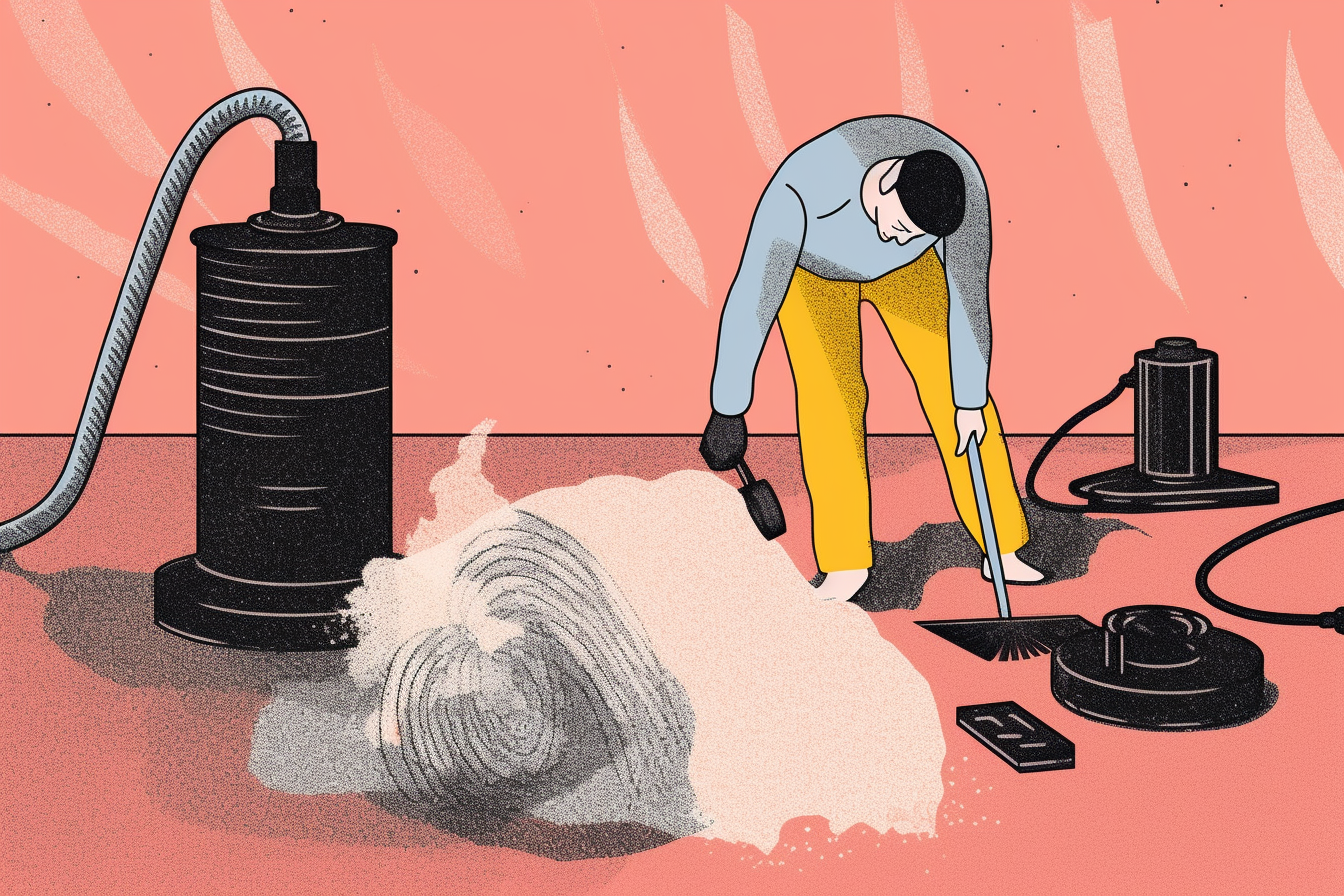Have you ever noticed that strange feeling under your feet when walking on a freshly cleaned carpet?
It’s not just your imagination – carpets do tend to feel different after they’ve been professionally cleaned or shampooed.
This phenomenon is something most of us have experienced, but why does it happen and what can we do about it?
In this article, we’ll delve into the reasons behind this weird sensation and explore how various cleaning methods can impact the texture and overall feel of our carpets.
We’ll also provide some tips for keeping them fresh without compromising their comfort.
So let’s get started and unravel the mystery of those post-cleaning carpet quirks!
The Science Behind Carpet Fibers
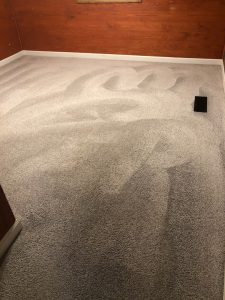 The strange sensation you experience when walking on a freshly cleaned carpet is due to the unique characteristics of carpet fibers. These fibers possess specific properties, such as fiber elasticity, stain resistance, and absorption properties that ultimately influence how they feel underfoot.
The strange sensation you experience when walking on a freshly cleaned carpet is due to the unique characteristics of carpet fibers. These fibers possess specific properties, such as fiber elasticity, stain resistance, and absorption properties that ultimately influence how they feel underfoot.
Furthermore, carpets are made from various materials, with synthetic and natural options available. Each material has its own set of qualities and drawbacks which can affect your perception of them after cleaning.
One important aspect to consider when discussing carpet fibers is the difference between synthetic and natural materials. Synthetic fibers like nylon, polyester, and olefin are engineered for durability and often have built-in stain resistance features. On the other hand, natural fibers such as wool or cotton tend to be more absorbent but less resilient in comparison.
The dye interactions within these different types of fibers also play a role in their overall feel; some dyes may bond better or alter the texture depending on whether it’s applied onto synthetic or natural fibers.
Taking all these factors into account helps explain why carpets might feel weird after cleaning. As moisture interacts with various fiber components (such as elasticity or absorption properties), this can create an altered tactile sensation until the carpet fully dries out.
Additionally, any residual detergent or chemicals used during the cleaning process could potentially modify how certain dyes react with each type of fiber, resulting in temporary changes to the overall texture of your carpet. So next time you walk across a recently cleaned floor covering, remember there’s quite a bit happening beneath your feet!
Different Carpet Materials And Their Characteristics
As we’ve explored the science behind carpet fibers, it’s essential to consider how different materials can impact the feel and durability of your carpets. The characteristics of various types of carpet fibers play a significant role in determining their performance and longevity.
In this section, let’s delve into some popular carpet materials and their unique attributes.
Polyester carpets:
Pros:
- Vibrant colors
- Soft texture
- Stain-resistant
Cons:
- Less durable compared to Nylon
Wool characteristics:
Pros:
- Natural fiber
- Excellent resilience
- Luxurious feel
Cons:
- Expensive
Nylon durability:
Pros:
- Highly resilient
- Durable and long-lasting
- Versatile for various styles
Cons:
- Can be prone to staining without treatment
Olefin properties:
Pros:
- Moisture resistant
- Economical choice
- Lightweight
Cons:
- Limited color choices
- Prone to crushing or matting
SmartStrand benefits:
Pros:
- Permanent stain resistance built into the fiber itself.
- Environmentally friendly production process.
- Comfortable underfoot with good softness.
Cons:
- May show footprints and vacuum marks more readily than other fibers.
With all these options available, selecting the right carpet material depends on various factors such as budget, personal preference, lifestyle needs, and desired appearance. Each type has its advantages and disadvantages – polyester carpets offer vibrant colors but may not provide high durability like nylon; wool is luxurious but expensive; olefin is affordable but limited in design choices, while SmartStrand boasts environment-friendly features yet might reveal footprints easily.
By understanding these distinctions between different carpet materials, homeowners can make informed decisions to maximize their investment and enjoy a comfortable living space.
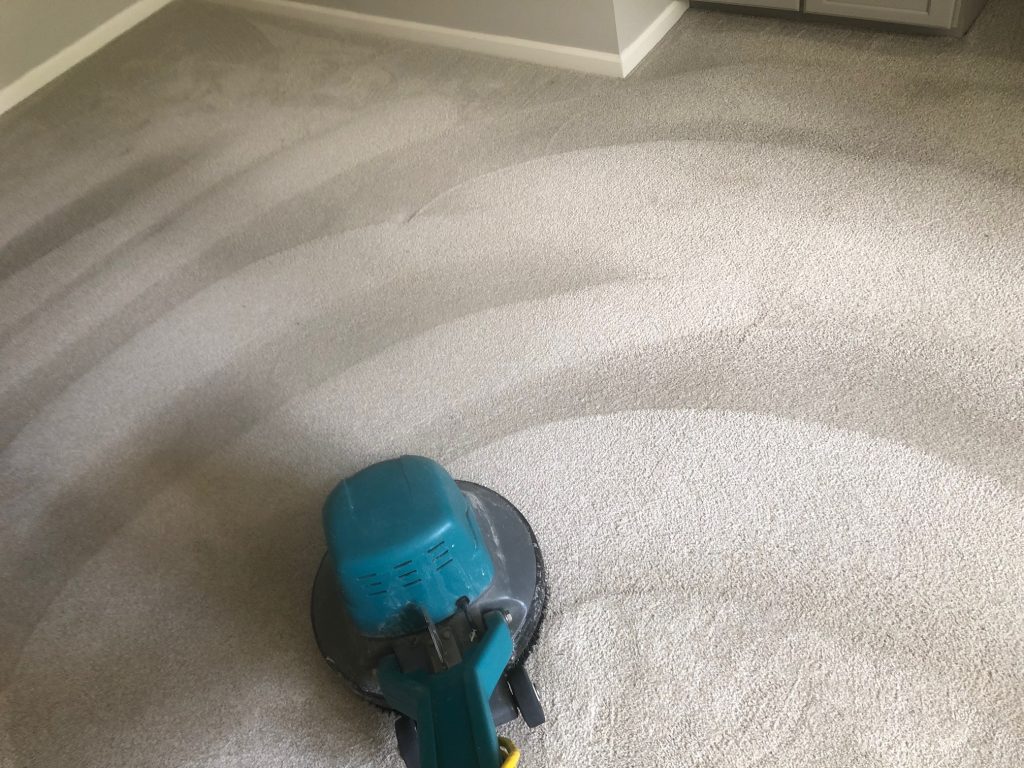
Common Carpet Cleaning Methods
Imagine walking into a room with freshly cleaned carpets; the fresh scent fills the air, and you can’t help but notice how pristine the fibers look. But as you take your first step onto the seemingly renewed flooring, something feels different – maybe even a bit weird. This sensation is likely due to one of several common carpet cleaning methods that were used to give your floors their newfound cleanliness.
Steam extraction, dry shampooing, encapsulation cleaning, bonnet cleaning, and foam cleaning are all popular techniques for maintaining carpets. Steam extraction involves injecting hot water deep into the carpet’s fibers before using powerful suction to remove dirt and debris.
Dry shampooing uses powder-based cleaners that bond with soil particles in the carpet, then they’re vacuumed up once dry. Encapsulation cleaning employs polymers that surround each fiber like a protective shell while removing dirt through agitation and drying process.
Bonnet cleaning utilizes absorbent pads soaked in cleaning solution which are attached to rotary machines that spin across the surface of the carpet effectively lifting away grime from within its fibers. Foam cleaning combines elements of both steam extraction and dry shampooing by applying low-moisture foam cleanser to lift dirt without saturating or damaging delicate materials.
Choosing an appropriate method for your specific needs will ensure not only clean carpets but also optimal tactile satisfaction post-cleaning. Each approach has unique benefits tailored towards various situations such as addressing heavy foot traffic areas, quick-drying requirements, or tackling stubborn stains on delicate rugs.
Regardless of the technique employed, it’s important to understand why your carpets may feel strange after a thorough cleansing session so you can make informed decisions about future treatments and enjoy refreshed flooring that feels just as good as it looks!
Residual Moisture And Its Effects
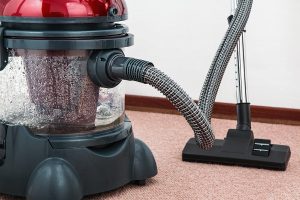 One primary reason for this strange feeling is residual moisture that remains in the fibers even after cleaning. Although most professional cleaning services will ensure that your carpet dries efficiently, some factors may prevent complete drying, leading to this peculiar experience.
One primary reason for this strange feeling is residual moisture that remains in the fibers even after cleaning. Although most professional cleaning services will ensure that your carpet dries efficiently, some factors may prevent complete drying, leading to this peculiar experience.
There are several reasons why residual moisture can linger within your carpet fibers:
– Inadequate drying techniques: It’s crucial to employ appropriate drying methods such as using air movers or dehumidifiers during and after the cleaning process.
– Moisture prevention: Taking steps like prepping the area with proper ventilation before starting the cleaning process can help reduce excess humidity.
– Humidity control: Maintaining an ideal indoor environment by controlling temperature and humidity levels also plays a significant role in preventing moisture retention in carpets.
To avoid any lingering dampness and potential damage caused by trapped moisture, rapid evaporation should be encouraged through effective airflow management.
By ensuring adequate circulation of warm, dry air around and beneath the carpeted surface, you’ll not only eliminate any unpleasant texture but also minimize the risk of mold growth or other types of moisture damage.
Proper maintenance practices such as vacuuming regularly and addressing spills promptly will further extend your carpet’s lifespan while preserving its comfort underfoot.
Addressing residual moisture effectively requires careful consideration of various factors like room conditions, type of carpet material, and inherent drying properties associated with different cleaning methods.
Make sure to discuss these aspects with your chosen professional cleaner so that they take all necessary precautions throughout their service delivery.
With proper care and attention from both parties involved, you can continue enjoying plush carpets without having to worry about them feeling odd post-clean!
Chemical Residues From Cleaning Solutions
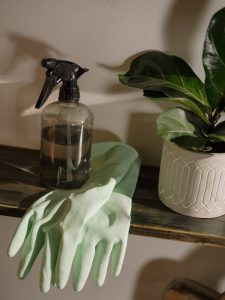 One major factor contributing to the strange sensation of carpets after cleaning can be attributed to chemical interactions. When using various cleaning agents, their ingredients may interact with the fibers and materials in your carpet, leaving behind a residue that alters the feel of the surface.
One major factor contributing to the strange sensation of carpets after cleaning can be attributed to chemical interactions. When using various cleaning agents, their ingredients may interact with the fibers and materials in your carpet, leaving behind a residue that alters the feel of the surface.
This is especially true if strong chemicals or solutions are used during the cleaning process. It’s essential to choose appropriate solution types for your specific type of carpet, as well as follow any recommended guidelines regarding proper usage and dilution.
Residue removal plays an essential role in ensuring that carpets maintain their original texture post-cleaning. If not properly rinsed out, residues from cleaning solutions can build up over time, leading to a stiffening or even stickiness on the carpet’s surface.
To combat this issue, it might be worthwhile investing in a high-quality carpet cleaner with advanced features designed specifically for thorough residue removal. Additionally, homeowners should consider vacuuming regularly between cleanings to help prevent dirt accumulation and minimize potential reactions between contaminants and residual chemicals within the fibers.
An excellent way to avoid these issues altogether is by opting for organic alternatives when selecting carpet cleaning products. Many eco-friendly options on the market rely on natural enzymes and plant-based surfactants rather than harsh synthetic chemicals.
These gentler formulas often leave little-to-no residue behind while still providing effective stain and odor removal capabilities. Furthermore, making use of organic cleaners reduces exposure risks associated with conventional chemical-laden products – promoting healthier living spaces for you and your family while preserving your carpet’s look and feel at its best, as well as contributing to a more sustainable and environmentally-friendly household.
Flattened Or Damaged Carpet Fibers
As we’ve discussed, chemical residues from cleaning solutions can contribute to carpets feeling weird after cleaning. However, another factor that may affect the texture of your carpet is the condition of its fibers.
Flattened or damaged carpet fibers can significantly impact how a carpet feels underfoot and may even alter its appearance. Fiber rejuvenation is essential for maintaining the softness and overall feel of your carpet.
When properly cleaned and maintained, carpet fibers can regain their original shape and pile direction, resulting in improved fiber softness and color restoration. Regular vacuuming helps maintain the pile direction and prevents dirt from settling into the depths of the carpet fibers, thereby extending your carpet lifespan.
Taking care to avoid harsh chemicals when cleaning your carpets will not only prevent unwanted residue but also protect delicate fibers from damage. Opting for gentle yet effective cleaning agents preserves both the look and feel of your flooring investment.
Changes In Carpet Texture
One key aspect to consider when discussing the unusual feeling of carpets after cleaning is the change in texture that can occur. Texture restoration plays a crucial role in maintaining the appearance and feel of your carpet, as well as ensuring its longevity.
Various factors contribute to these changes, such as the type of cleaning solution used, agitation from scrubbing or vacuuming, and even inadequate drying techniques.
Another important factor contributing to this strange sensation is fiber rejuvenation. DIY cleaning methods often result in alterations within the fibers of your carpet due to aggressive treatments or improper use of household cleaners. These changes affect not only how your carpet feels underfoot but also impact its overall performance regarding stain prevention and durability.
Properly caring for your carpet through regular maintenance and professional cleanings can help mitigate any undesirable effects on its texture while preserving its lifespan.
To sum up, it’s vital to recognize that changes in carpet texture following a cleaning are not uncommon; however, taking steps towards proper care and attention can be instrumental in preventing unwanted transformations.
Carpet maintenance should include routine vacuuming, spot cleaning with appropriate solutions, and scheduling periodic professional cleanings to ensure both texture restoration and fiber rejuvenation. By adopting these practices, you’ll maintain a comfortable and visually appealing floor covering that serves you well for years to come.
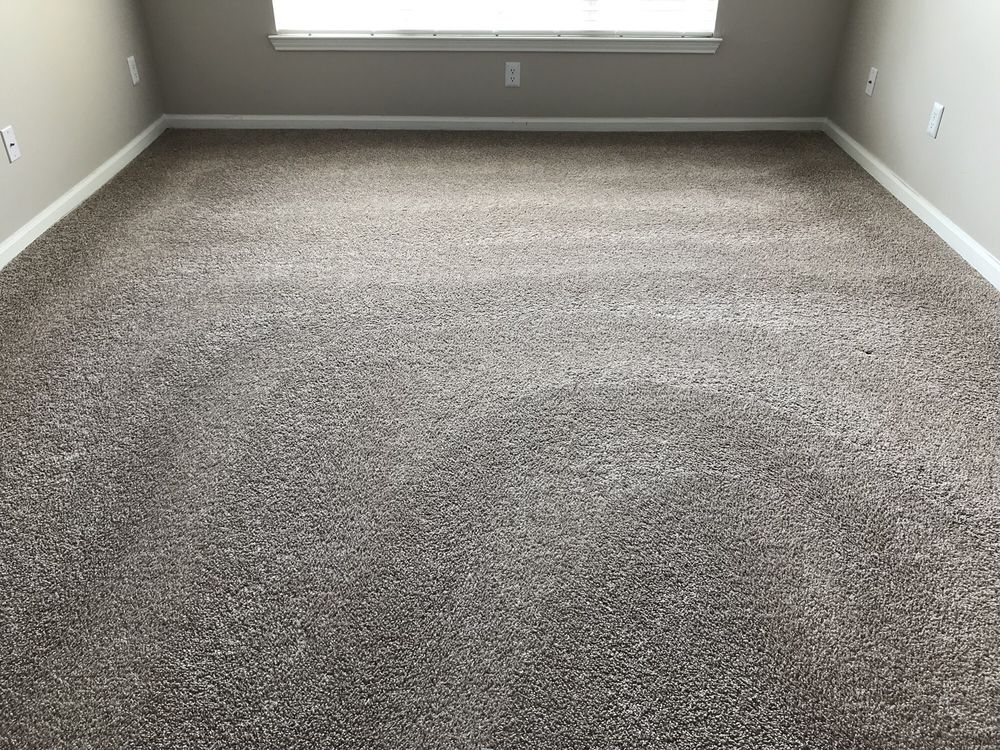
Tips For Preventing The Weird Feeling After Cleaning
One potential reason for that weird feeling on carpets after cleaning is carpet shrinking. This can happen when too much water is used during the cleaning process, causing some fibers to shrink and change texture.
Color fading might be another cause; harsh chemicals or overuse of detergents could lead to a loss of vibrancy in your carpet’s hues. Additionally, if odor elimination methods were not properly executed, lingering smells can contribute to an overall sense of unease.
Static buildup may also play a role in creating that strange sensation underfoot. Carpets are known for building up static electricity, especially during dry winter months or in air-conditioned environments. If proper antistatic treatments weren’t applied after cleaning, you might notice more zaps than usual as you walk across it.
Moreover, inadequate allergen removal can leave behind particles like dust mites, pet dander, and pollen – all culprits behind the uncomfortable feeling post-cleaning.
To prevent these issues from occurring after cleaning your carpet, make sure to use appropriate amounts of water and gentle yet effective cleaning solutions to avoid damage such as shrinking or color fading. It’s important to thoroughly rinse out any detergent residues so they don’t attract dirt later on.
When aiming for odor elimination and allergen removal, consider using specialized products designed for those purposes and ensure complete drying before walking on the carpet again. To combat static buildup, treat your freshly cleaned carpet with anti-static sprays or invest in a humidifier to maintain adequate moisture levels in the room where your carpet is located.
Taking these steps will help keep your carpets clean and comfortable without leaving behind that odd sensation we all want to avoid!
Call Safe-Dry!
It’s essential to understand the science behind carpet fibers and how various cleaning methods may affect them. By being aware of residual moisture, chemical residues, and potential damage, we can take steps to prevent that weird feeling after cleaning.
With these tips in mind, you’ll be able to enjoy a clean and comfortable carpet without any strange sensations.
Contact the professional cleaners at Safe-Dry Carpet Cleaning of Cypress for a guaranteed clean with no crunchy residue!


